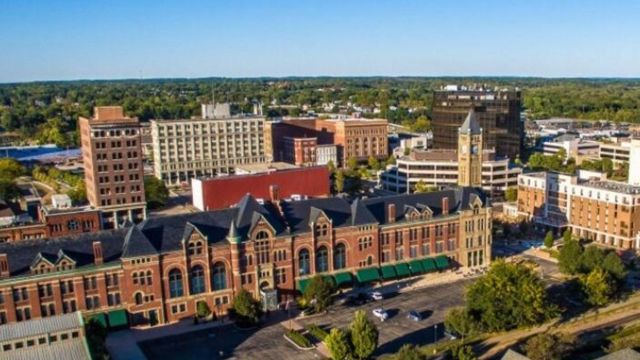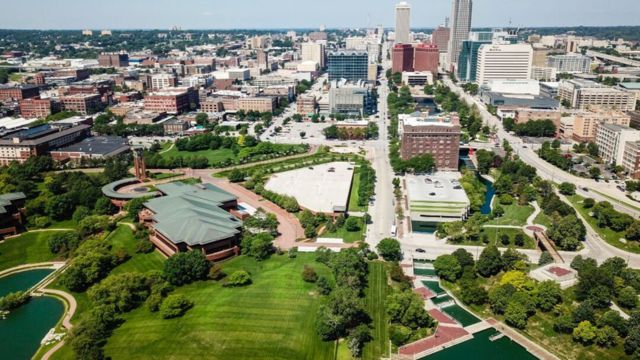
A Utah City Has Been Named the “Most Unhealthy City” in the Entire State
Utah is renowned for its awe-inspiring natural landscapes, diverse array of outdoor activities, and the profound impact of Mormon culture. However, despite this, the state faces some of the most severe air quality problems in the country, especially in the winter when weather inversions confine pollutants near the surface.
Despite the fact that numerous Utah counties and municipalities contend with inadequate air quality, Roosevelt emerges as the most hazardous municipality across the entire state.
What Causes Roosevelt, Utah to Be the Unhealthiest City?
Roosevelt, situated in Duchesne County, is a relatively small municipality consisting of a mere 7,041 inhabitants. Located in the Uinta Basin, this area has been contending with heightened concentrations of ozone and particulate pollution, which are predominantly caused by the operations of oil and gas companies, agricultural practices, and vehicle emissions.
Roosevelt, as reported in the 2023 State of the Air report by the American Lung Association, exhibits the highest ozone pollution level among the states, resulting in an annual mean of 18.8 hazardous days. The interaction between sunlight and nitrogen oxides and volatile organic compounds produces ozone, a hazardous gas. Lung injury, respiratory complications, and asthma exacerbations may result.
Additionally, Roosevelt has the highest incidence of short-term particle pollution in the state, with an annual average of 11.9 hazardous days. Particle pollution, also known as PM2.5, is comprised of minuscule solid and liquid particles that have the ability to penetrate deeply into the bloodstream and airways. It has the potential to induce cancer, heart attacks, strokes, and premature death.
What Health Implications Are Associated with Roosevelt Residence?
Roosevelt living is associated with severe health consequences for its inhabitants. According to a study conducted by the Massachusetts Institute of Technology, inadequate air quality is responsible for more than 450 fatalities annually in Utah. This represents an approximate incidence of air pollution-related fatalities per 15 individuals in the state.
There is no equal distribution of the adverse health effects of air pollution among different demographic categories. Specific population groups, including infants, the elderly, pregnant women, and those with chronic illnesses, are at a heightened risk of developing severe symptoms and complications as a result of being exposed to ozone and particle pollution.
Furthermore, economic opportunities and quality of life may be adversely affected for Roosevelt residents. Inadequate air quality has the potential to impede outdoor activities, diminish visibility, cause damage to crops and structures, and deter investment, tourism, and development in the vicinity.
How Might the Air Quality in Roosevelt Be Improved?
A collaborative strategy encompassing various stakeholders—including federal, state, and local administrations, the oil and gas industry, the agricultural sector, and the general public—is imperative for the improvement of air quality in Roosevelt. Possible resolutions consist of:
- Implementing stricter regulations and standards regarding emissions from oil and gas operations, including the implementation of pollution control devices and the reduction of flaring, venting, and leakage.
- Promoting the integration of environmentally friendly energy sources such as wind, solar, and geothermal, with the aim of reducing dependence on fossil fuels.
- Promoting the adoption of environmentally friendly modes of transportation, such as electric vehicles, public transportation, carpooling, and bicycling, while also urging for the decrease in vehicle idle and mileage.
- Providing public awareness regarding the health hazards associated with air pollution and advising them on preventative measures for their families. This entails refraining from outdoor activities on days with poor air quality, monitoring the air quality index, and utilizing air filtration and masks.
- Endorsing research and monitoring initiatives pertaining to air quality and its associated repercussions, in addition to fostering the creation of novel and efficacious remedies.
In conclusion
Roosevelt ranks as the least healthiest municipality in Utah on account of elevated concentrations of ozone and particulate matter contamination, which are predominantly caused by transportation, agricultural activities, and oil and gas operations. Roosevelt presents profound health and economic obstacles for its residents, with a particular emphasis on those who are most susceptible. Addressing air quality concerns in Roosevelt necessitates the collaboration and synchronization of diverse stakeholders, who are able to execute a multitude of strategies to diminish emissions, encourage the use of renewable energy, and enhance public consciousness.


